Ford Puma vs Toyota Corolla – Kumpi auto sopii sinulle paremmin?
Olipa kyse arjesta, perheestä tai pitkistä matkoista – tässä näkyvät erot.
Selvitä, sopiiko Ford Puma vai Toyota Corolla paremmin elämäntyyliisi.
In the ever-evolving automotive landscape, two contenders have emerged as popular choices among consumers: the Ford Puma and the Toyota Corolla. Despite their differences in body style and engineering philosophy, both vehicles deliver impressive performance and innovative features. In this article, we will compare the Ford Puma, a sleek compact SUV, with the Toyota Corolla, a reliable hatchback, exploring their technical specifications and innovative aspects.
Design and Body Type
The Ford Puma is designed as a compact SUV, offering a raised stance that provides better visibility and a sense of authority on the road. Its sporty silhouette is accentuated by sharp lines and a modern grille, appealing to buyers who prefer a stylish yet practical vehicle. The Puma measures 4186 mm in length, 1805 mm in width, and stands at a height of 1550 mm, making it a versatile choice for both city driving and outdoor adventures.
On the other hand, the Toyota Corolla stands as a classic hatchback, embodying a more traditional design ethos. With its length of 4370 mm, width of 1790 mm, and a height of 1435 mm, the Corolla delivers a compact footprint that's perfect for urban environments. The hatchback layout emphasizes practicality, offering ample cargo space while retaining a sporty look.
Engine and Performance
When it comes to engines, the Ford Puma offers a range of options, including petrol mild-hybrid (MHEV) and electric variants. The Puma is equipped with a 1.0L three-cylinder engine that produces power outputs ranging from 125 HP to 168 HP, depending on the configuration. Fuel consumption variants stand at approximately 5.4 to 6.0 L/100 km, while the electric range reaches up to 376 km, showcasing its versatility for both petrol and electric drivers.
In contrast, the Toyota Corolla employs a highly efficient full hybrid system, featuring either a 1.8L or 2.0L four-cylinder engine delivering between 140 HP and 196 HP. With consumption as low as 4.4 L/100 km and CO2 emissions of just 100 g/km, the Corolla stands out for its eco-friendly approach. Acceleration times are competitive, reaching 0 to 100 km/h in as little as 7.5 seconds.
Driving Experience and Handling
Ford’s Puma is designed with an emphasis on fun-to-drive characteristics. Its front-wheel-drive setup, combined with responsive steering and agile handling, makes it an engaging choice for drivers who appreciate a sporty ride. The available dual-clutch automatic transmission enhances performance, ensuring smooth gear transitions regardless of the conditions.
On the other hand, the Corolla has built its reputation on reliability and ride comfort. The adaptation of a Continuously Variable Transmission (CVT) contributes to a seamless driving experience, although some may argue it lacks the engagement found in traditional gearboxes. The Corolla’s emphasis on comfort and stability over sportiness makes it an excellent commuter vehicle.
Interior and Technological Innovativeness
Inside the Ford Puma, the cabin is characterized by a modern aesthetic with high-quality materials and an intuitive infotainment system. The vehicle is equipped with Ford’s latest SYNC 3 technology, enabling smartphone integration and advanced connectivity options. Additionally, a notable feature is the available 456 to 523 liters of trunk space, making it highly practical for families or road trips.
The Toyota Corolla, while simpler in its design, doesn’t sacrifice quality. It integrates Toyota’s latest multimedia system, offering compatibility with Apple CarPlay and Android Auto. The Corolla features a well-structured interior with comfortable seating and a cargo space ranging from 313 to 361 liters. Although more straightforward, the Corolla’s tech remains user-friendly and practical.
Safety and Reliability
Both vehicles are equipped with robust safety features. The Ford Puma comes with a suite of advanced driver-assistance systems (ADAS), including adaptive cruise control and lane-keeping assist, contributing to its high safety ratings. Ford's reputation for reliability is also supported by a variety of warranties and service plans tailored to customers’ needs.
Similarly, the Toyota Corolla is renowned for its safety prowess, earning high ratings in crash tests and incorporating Toyota Safety Sense technology as standard. This includes pre-collision systems, adaptive cruise control, and lane departure alerts, positioning it as a safe choice for drivers concerned about safety.
Conclusion
In the showdown between the Ford Puma and Toyota Corolla, both vehicles shine in their respective categories. The Puma appeals to those seeking a versatile and sporty compact SUV with a good blend of petrol and electric options. Meanwhile, the Corolla stands as a environmentally-conscious choice that emphasizes efficiency, reliability, and comfort.
Ultimately, the decision comes down to personal preference: whether you desire the sporty ride of the Puma or the eco-friendly reliability of the Corolla, you can’t go wrong with either choice.
Tässä mennään yksityiskohtiin: tekniset erot tarkemmin
Kustannukset ja kulutus: Hinta ja kulutus ovat tärkeimpiä ostopäätökseen vaikuttavia tekijöitä – ja juuri täällä erot usein korostuvat.
Ford Puma on hinnassa pienessä määrin edullisempi – sen lähtöhinta on 28900 €, kun taas Toyota Corolla maksaa 33300 €. Ero on noin 4440 €.
Polttoaineenkulutuksessa näkyy ero: Toyota Corolla kuluttaa 4.40 L ja on siten erottuva taloudellisempi kuin Ford Puma, jonka kulutus on 5.40 L. Ero on noin 1 L /100 km.
Moottori ja suorituskyky: Teho, vääntömomentti ja kiihtyvyys ovat autoharrastajien klassisia mittareita – ja erot tulevat tässä hyvin esiin.
Moottoritehossa Toyota Corolla on kevyt etulyöntiasemassa – 178 hv verrattuna 168 hv:een. Ero on noin 10 hv hv.
Kiihdytyksessä 0–100 km/h Ford Puma on kevyt nopeampi – 7.40 s vs. 7.50 s. Ero on noin 0.10 s sekuntia.
Huippunopeudessa Ford Puma on jonkin verran edellä – se yltää 210 km/h:een, kun taas Toyota Corolla saavuttaa 180 km/h. Ero on noin 30 km/h.
Tila ja käytännöllisyys: Sisätilat, tavaratila ja kantavuus ratkaisevat auton arjen käytettävyyden. Mukavuus ja joustavuus ovat avainasemassa.
Molemmissa autoissa on tilaa 5 henkilölle.
Omapainossa Ford Puma on kevyt kevyempi – 1316 kg verrattuna 1420 kg:een. Painoero on noin 104 kg.
Tavaratilan koossa Ford Puma tarjoaa selvästi havaittava enemmän – 523 L verrattuna 361 L:een. Ero on noin 162 L.
Maksimikantavuudessa Ford Puma pärjää pienessä määrin paremmin – jopa 1283 L, noin 231 L enemmän kuin Toyota Corolla.
Kantavuudessa Ford Puma on kevyt parempi – 469 kg verrattuna 450 kg:een. Ero on noin 19 kg.
Yhteenvetomme: Toyota Corolla osoittautuu olevan vain vähäinen etu ja saa siksi tittelin DriveDuel Champion!
Tässä vertailussa Toyota Corolla on monipuolisempi kokonaisuus.
Ford Puma
Ford Puma on saanut runsaasti huomiota upealla muotoilullaan ja käytännöllisillä ominaisuuksillaan. Sen kompakti koko yhdistää mukavasti energisen ajokokemuksen ja tilavat tavaratilat. Tämä auto on täydellinen valinta kaupunkiajoon, yhdistäen tyylikkyyden ja toimivuuden saumattomasti.
Tiedot @ puma.fordpresskits.com
@ puma.fordpresskits.com
 @ puma.fordpresskits.com
@ puma.fordpresskits.com
 @ puma.fordpresskits.com
@ puma.fordpresskits.com
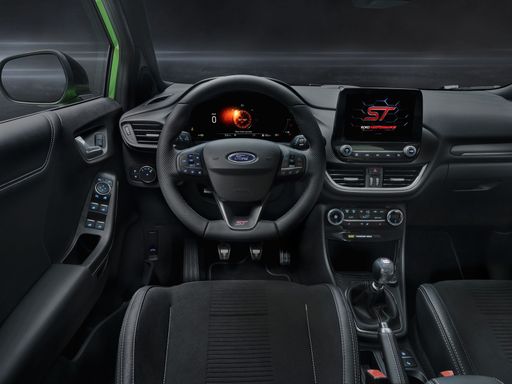 @ puma.fordpresskits.com
@ puma.fordpresskits.com
Toyota Corolla
Toyota Corolla on ollut pitkään yksi suosituimmista henkilöautoista maailmanlaajuisesti, ja se tunnetaan erityisesti luotettavuudestaan ja taloudellisuudestaan. Uusimmassa mallissa on panostettu entistä enemmän koukuttavaan muotoiluun ja moderniin teknologiaan, jotka tekevät ajokokemuksesta miellyttävämmän. Lisäksi Corolla tarjoaa runsaasti tilaa ja mukavuutta, mikä tekee siitä erinomaisen valinnan perheille ja kaupunkiautoilijoille.
Tiedot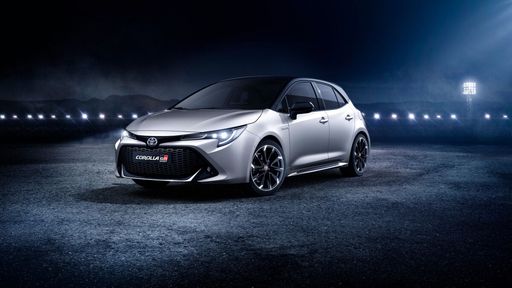 @ Toyota
@ Toyota
 @ Toyota
@ Toyota
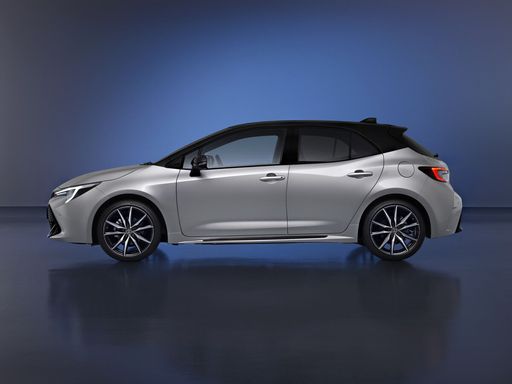 @ Toyota
@ Toyota
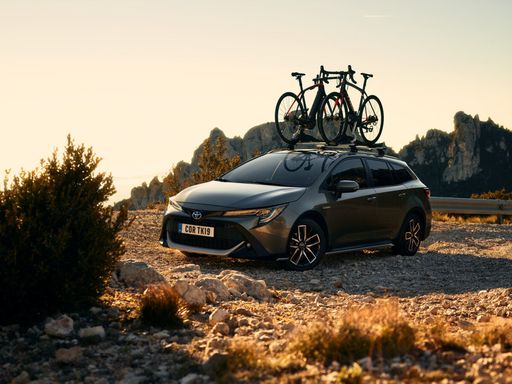 @ Toyota
@ Toyota
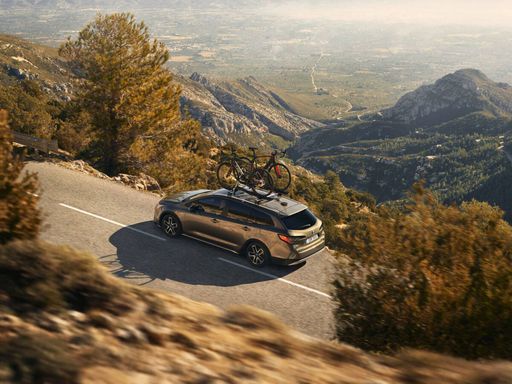 @ Toyota
@ Toyota

|

|
|
|
|
Kustannukset ja kulutus |
|
|---|---|
|
Hinta
28900 - 42400 €
|
Hinta
33300 - 40700 €
|
|
Kulutus L/100km
5.4 - 5.9 L
|
Kulutus L/100km
4.40 L
|
|
Kulutus kWh/100km
13.1 - 13.9 kWh
|
Kulutus kWh/100km
-
|
|
Sähköinen toimintasäde
361 - 376 km
|
Sähköinen toimintasäde
-
|
|
Akun kapasiteetti
43 kWh
|
Akun kapasiteetti
-
|
|
CO2
0 - 135 g/km
|
CO2
100 g/km
|
|
Polttoainesäiliön tilavuus
42 L
|
Polttoainesäiliön tilavuus
43 L
|
Mitat ja kori |
|
|---|---|
|
Kori
SUV
|
Kori
Hatchback
|
|
Istuimet
5
|
Istuimet
5
|
|
Ovet
5
|
Ovet
5
|
|
Omamassa
1316 - 1563 kg
|
Omamassa
1420 - 1460 kg
|
|
Tavaratila
456 - 523 L
|
Tavaratila
313 - 361 L
|
|
Pituus
4186 - 4226 mm
|
Pituus
4370 mm
|
|
Leveys
1805 mm
|
Leveys
1790 mm
|
|
Korkeus
1550 - 1555 mm
|
Korkeus
1435 mm
|
|
Maksimi tavaratila
1216 - 1283 L
|
Maksimi tavaratila
1004 - 1052 L
|
|
Kantavuus
367 - 469 kg
|
Kantavuus
400 - 450 kg
|
Moottori ja suorituskyky |
|
|---|---|
|
Moottorityyppi
Sähkö, Bensiini MHEV
|
Moottorityyppi
Täyshybridi
|
|
Vaihteisto
Automaatti, Manuel
|
Vaihteisto
Automaatti
|
|
Vaihteiston tyyppi
Alennusvaihteisto, Manuaalivaihteisto, Kaksoiskytkin automaatti
|
Vaihteiston tyyppi
CVT-vaihteisto
|
|
Vetotapa
Etuveto
|
Vetotapa
Etuveto
|
|
Teho hv
125 - 168 hv
|
Teho hv
140 - 178 hv
|
|
Kiihtyvyys 0-100 km/h
7.4 - 9.8 s
|
Kiihtyvyys 0-100 km/h
7.5 - 9.2 s
|
|
Huippunopeus
160 - 210 km/h
|
Huippunopeus
180 km/h
|
|
Vääntömomentti
170 - 290 Nm
|
Vääntömomentti
-
|
|
Sylinterien lukumäärä
3
|
Sylinterien lukumäärä
4
|
|
Teho kW
92 - 124 kW
|
Teho kW
103 - 131 kW
|
|
Iskutilavuus
999 cm3
|
Iskutilavuus
1798 - 1987 cm3
|
Yleiset |
|
|---|---|
|
Mallivuosi
2025
|
Mallivuosi
2025
|
|
CO2-tehokkuusluokka
A, D
|
CO2-tehokkuusluokka
C
|
|
Merkki
Ford
|
Merkki
Toyota
|
Onko Ford Puma saatavana eri vetotavoilla?
Mallia tarjotaan Etuveto-versiona.
Näytetyt hinnat ja tiedot ovat arvioita, jotka perustuvat Saksan listahintoihin, ja voivat vaihdella maittain. Nämä tiedot eivät ole oikeudellisesti sitovia.
